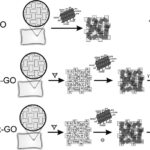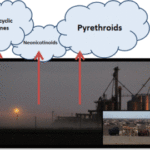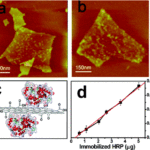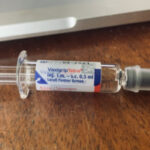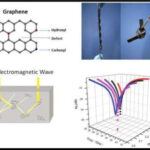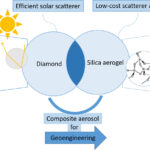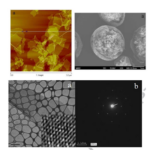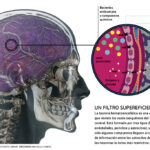December 30, 2024 5g, Graphene, Scientific alternative studies
The paper demonstrates that rGO-reduced graphene oxide can effectively absorb electromagnetic waves, particularly with respect to 5G emissions.
Graphene Oxide and Electromagnetic Absorption in 5G Technology
Reference Study
Chen, Y.; Fu, X.; Liu, L.; Zhang, Y.; Cao, L.; Yuan, D.; Liu, P. (2019). Millimeter wave absorbing property of flexible graphene/acrylonitrile-butadiene rubber composite in 5G frequency band. Polymer-Plastics Technology and Materials, 58 (8), 903-914. https://sci-hub.mksa.top/10.1080/03602559.2018.1542714
Facts analyzed
This study analyzes electromagnetic wave absorption tests of 5G transmitters in “rGO” reduced graphene oxide materials.
For this purpose, frequency and bandwidth variables were studied with different variants of “rGO“, and the best absorption characteristics of the rGO/NBR type in the frequency range of 26.5 to 40 GHz were revealed.
NBR is a copolymer of nitrile rubber and butadiene, also known as perbunan.
It is a copolymer characterized by friction resistance, non-temperature degradability, acid resistance and antistatic properties.
However, it can become brittle when exposed to ozone or ultraviolet light.
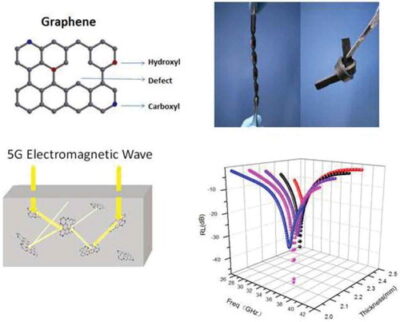
The researchers conclude that rGO/NBR is the optimal material because it achieves the lowest electromagnetic wave (microwave) reflection index value of any material, with a value of -45 dB at 35.4 GHz, which allows absorption of almost all 5G transmissions.
One of the conclusions of the article is very significant, which reads, “therefore, the microwave absorption capacity of composites could be adjusted by changing the reduction time and sample thickness, which facilitates the customization of the optimal electromagnetic absorption material for specific needs.
In addition to the factors mentioned above, the grain size of rGO and its dispersion in NBR are believed to be influential factors in EM wave absorption“.
This means that one has a very comprehensive understanding of the factors that determine the absorption of electromagnetic waves according to the desired applications and uses.
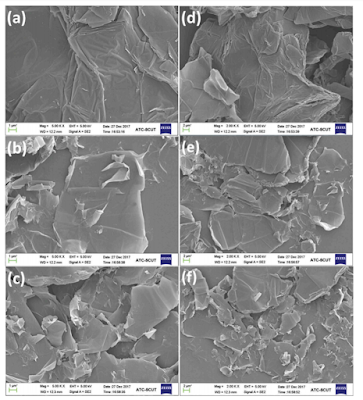
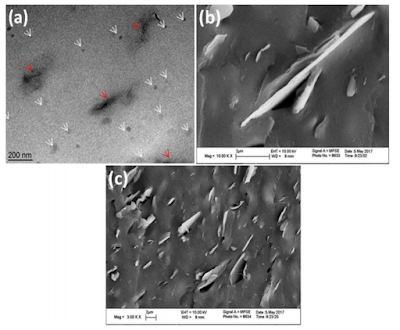
On the other hand, the literature cited in the article was reviewed, paying special attention to the references specifically related to GO graphene oxide.
Among them, the study by (Chen, D.; Wang, G.S.; He, S.; Liu, J.; Guo, L.; Cao, M.S., 2013) on the “controllable production of mono-dispersed rGO-hematite nanocomposites and their improved wave absorption properties” deserves special mention.
The title highlights the goal of producing rGO-reduced graphene oxide nanomaterials with easily tunable wave absorption properties for frequency ranges.
In this case, the material consists of a hematite crystal coated with rGO.
Hematite is an iron oxide of the trigonal/hexagonal class that becomes magnetized when heated or excited by microwaves (Bødker, F.; Hansen, M. F.; Koch, C. B.; Lefmann, K.; Mørup, S. 2000; Wang, W. W.; Zhu, Y. J.; Ruan, M. L. 2007).

Final thoughts
The article demonstrates that reduced graphene oxide rGO can effectively absorb electromagnetic waves, especially with respect to 5G emissions.
Given the wave absorption capacity of graphene oxide “GO” or its reduced graphene oxide derivative “rGO”, its inoculation into the human body could pose a health risk.
In fact, according to (Tien, HN; Luan, VH; Cuong, TV; Kong, BS; Chung, JS; Kim, EJ; Hur, SH 2012), the application of microwaves to GO graphene oxide causes the deoxygenation of graphene oxide itself, resulting in the reduction of rGO graphene oxide and “free radicals“.
These free radicals are directly related to the disruption of the homeostasis (i.e., normal functioning) of mitochondria, which are responsible for cellular respiration, which can lead to significant side effects.
The literature on the reduction of graphene oxide by microwaves is extensive, both for direct and indirect reference, and may include the following works by (Jakhar, R. et al., 2020) and (Tang, S. et al., 2019), which again confirm the interaction between microwaves, 5G and graphene oxide.
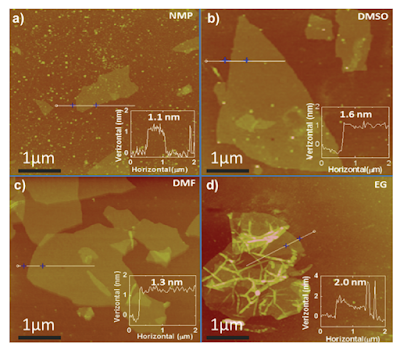
Bibliography
1.Bødker, F.; Hansen, MF; Koch, CB; Lefmann, K.; Morup, S. (2000). Magnetic properties of hematite nanoparticles. Physical Review, 61 (10), 6826. https://doi.org/10.1103/PhysRevB.61.6826
2.Chen, D.; Wang, GS; He, S. .; Liu, J.; Guo, L.; Cao, MS (2013). Controllable fabrication of mono-dispersed RGO–hematite nanocomposites and their enhanced wave absorption properties. Journal of Materials Chemistry A, 1 (19), pp. 5996-6003. https://doi.org/10.1039/C3TA10664K
3.Jachar, R.; Yap, JE; Joshi, R. (2020). Microwave reduction of graphene oxide. Carbon. 170, pagg. 277-293 https://doi.org/10.1016/j.carbon.2020.08.034
4.Tang, S.; Jin, S.; Zhang, R.; Liu, Y.; Wang, J.; Hu, Z.; Jin, M. (2019). Effective reduction of graphene oxide via a hybrid microwave heating method by using mildly reduced graphene oxide as a susceptor. Applied Surface Science, 473, pp. 222-229. https://doi.org/10.1016/j.apsusc.2018.12.096
5.Tie, HN; Luan, VH; Cuong, TV; Kong, BS; Chung, JS; Kim, EJ; Hur, SH (2012). Fast and simple reduction of graphene oxide in various organic solvents using microwave irradiation. Journal of nanoscience and nanotechnology, 12 (7), pp. 5658-5662. https://doi.org/10.1166/jnn.2012.6340
6.Wang, WW; Zhu, YJ; Ruan, ML (2007). Microwave-assisted synthesis and magnetic property of magnetite and hematite nanoparticles. Journal of Nanoparticle Research, 9 (3), pp. 419-426. https://doi.org/10.1007/s11051-005-9051-8


